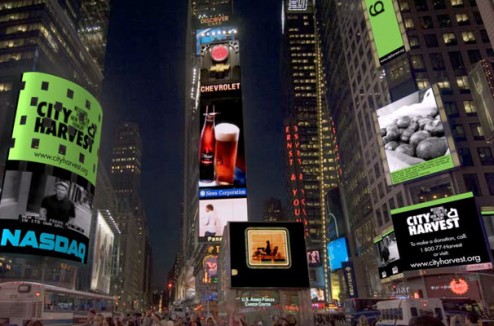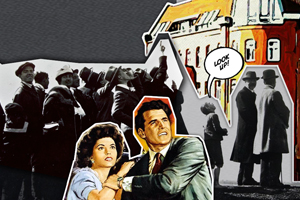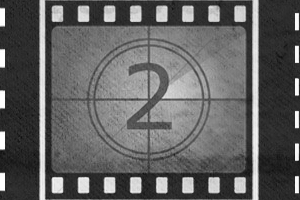THE STREAMING MUSEUM

1 – 30 November 2012
MOMENTUM’s SKY SCREEN is proud to host 2 video programs curated by New York City’s STREAMING MUSEUM
The Streaming Museum – In Cyberspace And Public Space On 7 Continents
The Streaming Museum has presented over 30 video exhibitions since its launch on January 29, 2008 that have been viewed by millions of people on public screens in over 55 cities and Antarctica. Produced and broadcast in New York City, Streaming Museum generates its dynamic, innovative content of international fine arts, culture and visionary innovations in collaboration with prominent and emerging visual and performing artists and curators. The museum also presents exhibitions and events at partnering cultural centers and international arts festivals. The selection presented on SKY SCREEN features 2 Streaming Museum video programs including 7 artists from around the globe.
CYBORG ALARM, curated by TANYA TOFT
KAROLINA SOBECKA – Capacity to Act in a World (2011)
MICHAEL GREATHOUSE – In Dreams (2009)
SOPHIE KAHN – 04302011 (2011)
JAMES CASE-LEAL – Republic of Heaven (2010)
JASON BERNAGOZZI – The Presence of Something in its Absence (2008)
CARABALLO-FARMAN – Venerations (Applause) (2009)
KAIROS
EMANUEL DIMAS DE MELO PIMENTA – Kairos (2011)
These works can also be seen at MOMENTUM | Berlin from 8 November – 2 December 2012.
CYBORG ALARM

CYBORG ALARM: When Technology, Imagination and Body Collide; features artwork by 2011 NYFA Fellows and Finalists and is curated by Tanya Toft. CYBORG ALARM will be on view at Big Screen Plaza through July 2012 and will tour to international locations such as Momentum Worldwide, Berlin.
The exhibition address the timely topic of being human in a world in which digital technology and the body are colliding and giving us new experiences, ideas and capabilities for inventing and imagining our physical and virtual identities. The artworks explore the digital persona as it transcends the human body in representational situations of the contemporary world where norms and behavior are reformulated.
The exhibition is inspired by Marshall McLuhan’s description of how art acts as “an early alarm system” and anticipates future social and technological developments. This prompts us to reflect whether what we see in today’s art might anticipate a new reality for future generations. Has the idea of the cyborg, a fictional technologically dependent organism popularized in the 1960’s, gained new relevance as digital technologies continue to enhance our human capabilities and affect our behavior and imagination?
The artworks featured in CYBORG ALARM exemplify how art can translate these issues across time, space and cultures. Telling a story through images of the human dimension in the digital world, they could be considered “contemporary hieroglyphs.” They include:
Karolina Sobecka’s Capacity to Act in a World (2011) investigates the limits and meaning of human agency. It explores behavior within an interdependent matrix of elements, sets of norms and constructed histories. The piece exposes our capabilities for navigating and understanding the world in our overtly mediated environments.
In Dreams (2009) by Michael Greathouse is inspired by film noir and b/w Hollywood horror films and produced exclusively with composited computer animation. It depicts continual repetition of a single moment of a human portrait floating in animated waters. In Dreams addresses identity in terms of continuity and journeys through an anachronistic world with endless dimensions.
04302011 (2011) by Sophie Kahn is a collection of laser portraits of New Yorkers inspired by rotating 3-D models of people on large public screens in sci-fi movie scenes. The portraits appear incomplete and fragmented as a result of disruptions caused by the models’ movement and breathing during the scanning process, suggesting a metaphor of instability in our digitally mediated identities.
James Case-Leal’s Republic of Heaven (2010) presents a lyrical interpretation of the world in which we live. The piece illustrates a spiritual departure from the material world into “the next world” – that is fantastic and perhaps ideal – one which might be possible in the digital realm. It reflects human aspirations and a sense of endlessness, perhaps mirroring the experience in the world’s endless chain of Internet links.
Jason Bernagozzi’s The Presence of Something in its Absence (2008) illustrates a perceptual experience in a digital world. In this poetic universe, there is a sense of ‘getting lost in code’ or virtual worlds; perhaps a search for identity, perception and rhythm, covered in great expectations for the future.
Venerations (Applause) (2009) by caraballo-farman questions the dictates of logic and free will. Why does an audience produce shared emotional states and erupt in collective applause, bound beyond reason? This ritual mirrors situations of collective behavior in a manipulative, commercial, and participatory culture, which is becoming increasingly complex and opaque.
Karolina Sobecka, Michael Greathouse, Sophie Kahn, James Case-Leal, and the artist team caraballo-farman, are 2011 Artists’ Fellowship recipient of the New York Foundation for the Arts (NYFA). Jason Bernagozzi is a 2011 Artists’ Fellowship finalist.
This presentation is cosponsored by Artists & Audiences Exchange, a public program Administered by NYFA with leadership support from the New York State Council on the Arts (NYSCA).
Emanuel Pimenta – KAIROS

EMANUEL DIMAS DE MELO PIMENTA, Kairos: an architectural design for a building in Earth’s orbit, 2011
This video and sound artwork was created in memory of John Cage, René Berger, Joseph Beuys, Hans Joachim Koellreutter, Richard Buckminster Fuller, Marshall McLuhan and John Archibald Wheeler – seven magical doors to a new universe. The sound art is composed of extraterrestrial sounds and was presented in concert SETI in 2002.
“Human must rise above the Earth – to the top of the atmosphere and beyond – for only thus will he fully understand the world in which he lives” – Socrates (469-399 BC)
“Following Nature’s own design principles, human may be able to produce most-economic designs while at the same time solving formerly insoluble design problems” – Richard Buckminster Fuller
Kairos is an orbital building, a privileged observatory of Earth, open to civil society, recalling the ancient Sumerian concept of ‘deep time’, projecting a complex of human values in a large-scale spectrum. KAIROS is a conceptual work that merges architecture design and art project in a same corpus – a crossing point between aesthetics, function and technology. Being an architectural design, it presents structural developments in terms of function and technological challenges. As a visual artwork, it crosses all fields of environments and functions, projecting unexpected images that are, at the same time, abstract and figurative, linear and non-linear. As an artwork it questions and criticizes the concept of contemporary art and culture in general. In few words, Kairos is a design for an orbital building.
Kairos launches on September 10, 2011, at Holotopia Academy, Amalfi Coast, where Ulysses met the Sirens in Homer’s Odyssey. The work will become part of a permanent collection of the ancient 17th century tower that has been transformed into a contemporary art museum by the scientist and art lover, Alberto del Genio, Founder of the Holotopia Academy which is devoted to music, art and philosophy. On October 27 Kairos will be exhibited at the Robotarium technology/art center in Lisbon, Portugal, curated by its founder/director and robotic artist, Leonel Moura. In November the book Kairos: A Bird Orbiting Planet Earth will be released. It includes details of the project, and a history of space satellites, laboratories and stations.


 Back to Index
Back to Index
